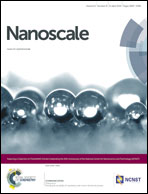Biodegradable nanoassemblies of piperlongumine display enhanced anti-angiogenesis and anti-tumor activities
Abstract
Piperlongumine (PL) shows an inhibitory effect on tumor growth; however, lipophilicity has restricted its further applications. Nanotechnology provides an effective method to overcome the poor water solubility of lipophilic drugs. Polymeric micelles with small particle size can passively target tumors by the enhanced permeability and retention (EPR) effect, thus improving their anti-tumor effects. In this study, to improve the water solubility and anti-tumor activity of PL, PL encapsulated polymeric micelles (PL micelles) were prepared by a solid dispersion method. The prepared PL micelles showed a small particle size and high encapsulation efficiency, which could be lyophilized into powder, and the re-dissolved PL micelles are homogenous and stable in water. In addition, a sustained release behavior of PL micelles was observed in vitro. Encapsulation of PL into polymeric micelles could increase the cytotoxicity, cellular uptake, reactive oxygen species (ROS) and oxidized glutathione (GSSG), and reduce glutathione (GSH) levels in vitro. Encapsulation of PL into polymeric micelles enhanced its inhibitory effect on neovascularization both in vitro and in vivo. Compared with free PL, PL micelles showed a stronger inhibitory effect on the proliferation, migration, invasion and tube formation of human umbilical vein endothelial cells (HUVECs). Additionally, in a transgenic zebrafish model, embryonic angiogenesis was inhibited by PL micelles. Furthermore, PL micelles were more effective in inhibiting tumor growth and prolonging survival in a subcutaneous CT-26 murine tumor model in vivo. Therefore, our data revealed that the encapsulation of PL into biodegradable polymeric micelles enhanced its anti-angiogenesis and anti-tumor activities both in vitro and in vivo.


 Please wait while we load your content...
Please wait while we load your content...